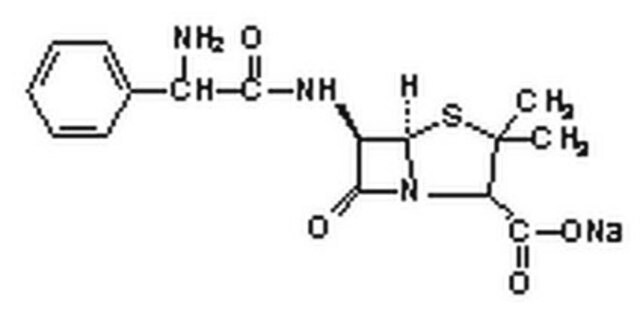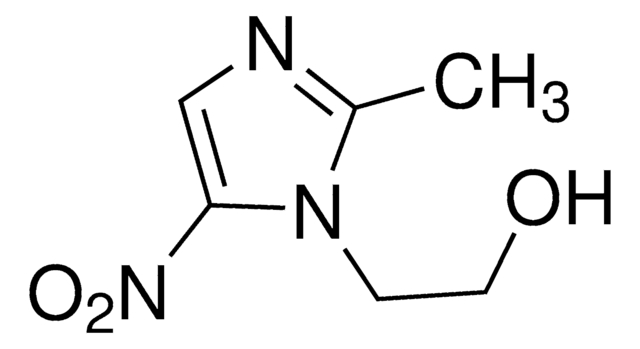A9518
Ampicillin sodium salt
Synonym(s):
D-(−)-α-Aminobenzylpenicillin sodium salt
About This Item
Recommended Products
biological source
synthetic (chemical)
Quality Level
form
powder
color
white to off-white
mp
215 °C (dec.) (lit.)
solubility
water: 50 g/L
antibiotic activity spectrum
Gram-negative bacteria
Gram-positive bacteria
application(s)
agriculture
mode of action
cell wall synthesis | interferes
storage temp.
2-8°C
SMILES string
[Na+].CC1(C)SC2[C@H](NC(=O)[C@H](N)c3ccccc3)C(=O)N2[C@H]1C([O-])=O
InChI
1S/C16H19N3O4S.Na/c1-16(2)11(15(22)23)19-13(21)10(14(19)24-16)18-12(20)9(17)8-6-4-3-5-7-8;/h3-7,9-11,14H,17H2,1-2H3,(H,18,20)(H,22,23);/q;+1/p-1/t9-,10-,11+,14-;/m1./s1
InChI key
KLOHDWPABZXLGI-YWUHCJSESA-M
Looking for similar products? Visit Product Comparison Guide
General description
Application
- to select for ampicillin resistance in mutated and transformed cells
Biochem/physiol Actions
Mode of Resistance: Administration with ß-lactamase cleaves the ß-lactam ring of Ampicillin and inactivates it.
Antimicrobial Spectrum: Includes both gram-positive (similar to benzylpenicillin) and gram-negative bacteria (similar to tetracyclines and chloramphenicol.
Features and Benefits
- High-quality antibiotic suitable for multiple research applications
- Ideal for Cell Biology and Biochemical research.
Caution
Preparation Note
Storage and Stability
Other Notes
Related product
comparable product
signalword
Danger
hcodes
Hazard Classifications
Resp. Sens. 1A - Skin Sens. 1A
Storage Class
11 - Combustible Solids
wgk_germany
WGK 3
flash_point_f
Not applicable
flash_point_c
Not applicable
ppe
dust mask type N95 (US), Eyeshields, Faceshields, Gloves
Choose from one of the most recent versions:
Already Own This Product?
Find documentation for the products that you have recently purchased in the Document Library.
Customers Also Viewed
Protocols
USP HPLC Analysis of Ampicillin Sodium on Ascentis® Express C18
Our team of scientists has experience in all areas of research including Life Science, Material Science, Chemical Synthesis, Chromatography, Analytical and many others.
Contact Technical Service










